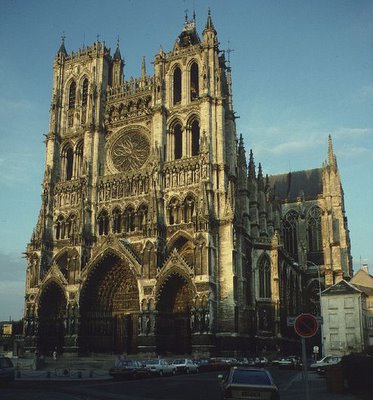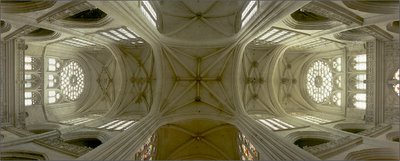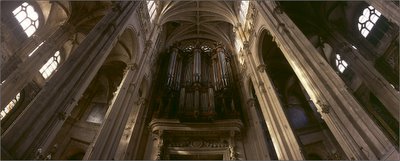
BLDGBLOG here proposes an ecumenical cathedral for the holiday season, made entirely of magmatic architecture.
The cathedral would consist of nothing but igneous rock, extruded directly from the earth and diverted through a complicated system of pipework and trenches. These would act as a plumbing system, shaping eruptive flows, giving the lava architectural form as it cools.
The lava would therefore be frozen in place on-site, taking the final form of the building; it would steam for a bit, perhaps, maybe hiss if it's raining – but then it's architecture.
A kind of lava-fountain; a domestication of the earth's magmatic dynamism.


The red eddies of liquid glass from an ongoing eruption – Hawaii, or Iceland – would be shaped immediately into the buttressed vaults, nave, tracery, and cloisters of this, the world's largest cathedral, larger than most towns and continually growing. A crystalline crypt, glassine, geothermal.
New wings and side-chapels appear with every eruption.

[Image: The flying buttresses of Notre-Dame, from a Boston College Gothic architecture page].
The resulting volcanic glass could even be shaped into thin sheets of polished obsidian, fed through a filigree of pipework till you've got stained rosate windows, readymade. Perhaps you could color the flows using a salt of various metals.
Churches were always geological, monuments to stratigraphy –

[Image: The cathedral at Amiens, from Boston College's High Gothic architecture page].
– this just more so.
The earth, printing itself upward into arches and barrel vaults; new Gothic mountains, shaped by the creative process they celebrate.



[Images: Arnaud Friche, Senlis Cathedral, Gothic Vault, Senlis, Oise, France; The Great Organ, Saint-Eustache, Paris; and the Crypt of the Plaimpied Church, Cher, France (many more beautiful photos at this site; spotted via things magazine)].
Alternatively, of course, you would not need a volcano. You'd simply build an earth-melting platform anywhere in the world, and it would melt its way down through the earth's crust.

As a boat passing through water creates a wake, the platform's passage through the earth would create cathedrals, lava curling up in buttresses and freezing into place.
Frozen wakes of igneous rock in the form of sacred architecture.
Or a volcanic pasta machine: extruding churches from terrestrial dough.

[Image: Viollet-le-Duc's ideal Gothic cathedral, prior to the era of magmatic architecture – which hereby begins].
(And for a bit more on volcanic landscapes, see Mount St. Helens of Glass).
No comments:
Post a Comment